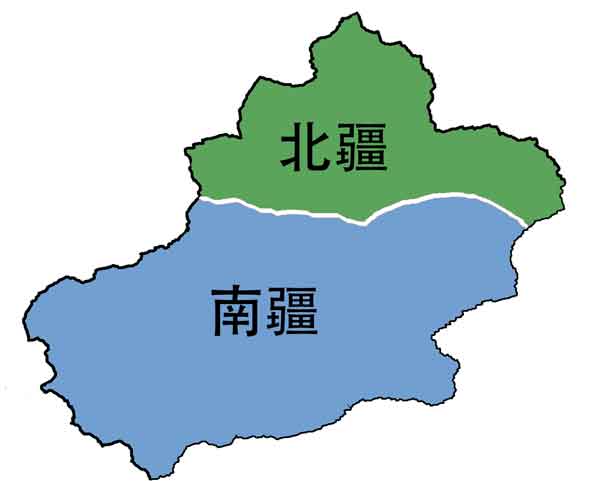A Crazy Idea That Would Literally Reshape Xinjiang, China
I read news this last week about a recent proposal to push the US state of California to divide into 6 different states. It intrigued me for a few different reasons, not the least of which has to do with my current home here in Xinjiang, China.

The California proposal claims that California has grown so big, so inefficient, it’s essentially ungovernable. Despite all the difficulties involved with such a split and the fact that the odds are slim that this will pass, the proposal does have merit.
By itself, the state of California would have the eighth-largest economy in the world yet there are vast parts of the state that are poorly underserved and spending is unbalanced.
What about Xinjiang, China?
If such a proposal makes sense for a state like California in the U.S., why not something similar here in western China?
Xinjiang is the largest of China’s regions and has quickly become one of the fastest growing in terms of wealth (home to China’s richest city) and infrastructure (soon to open a high-speed rail link). Unfortunately it has also been one of Beijing’s biggest headaches in terms of security spending and social stability.
So for the sake of argument, what if Xinjiang were to split into two halves? It’s interesting to think about, especially when you consider:
- Geographic Division: Xinjiang is naturally divided into a northern and southern half by the beautiful and massive TianShan range that crosses from west to east across the province.
- Nomenclature: around here it’s quite common to hear people refer to a place as being in 北疆 (“North Xinjiang”) or 南疆 (“South Xinjiang”). The naming has already occurred.
- Ethnicity: generally speaking, south Xinjiang is home to a vast majority of the Uyghur ethnic group while northern Xinjiang boasts a majority Han Chinese followed by Kazakh and others.
- Foreign Trade: Currently Xinjiang borders 8 countries with most of the trade occurring across the border with Kazakhstan in the north and Pakistan in the south. Dividing the two could allow the regions to focus time and resources to developing these separate trade links.
- Historically: due to the geographic division mentioned above, a lot of Xinjiang’s history is also separated into events in the north and events in the south. It wasn’t until the late 1800’s the the current borders began to take a more permanent shape.

A rough estimate of the natural Xinjiang dividing line
Concluding Thoughts
Just like California, any changes of this magnitude in Xinjiang would take years to develop, if at all. I’m not promoting this as a great idea – heck, I’ve only entertained the thought for a few days – but it is interesting, isn’t it? The implications of such a change are likely far greater than I realize.
Let’s see what happens to California first. If they can pull it off, you just never know.
What do you think?
Dumb idea or intriguing proposal? I’d be interested to hear your thoughts, especially from those who have a more intimate knowledge of Xinjiang.





